Recent Articles
Popular Makes
Body Types
2017 Jaguar F-Pace Road Test and Review
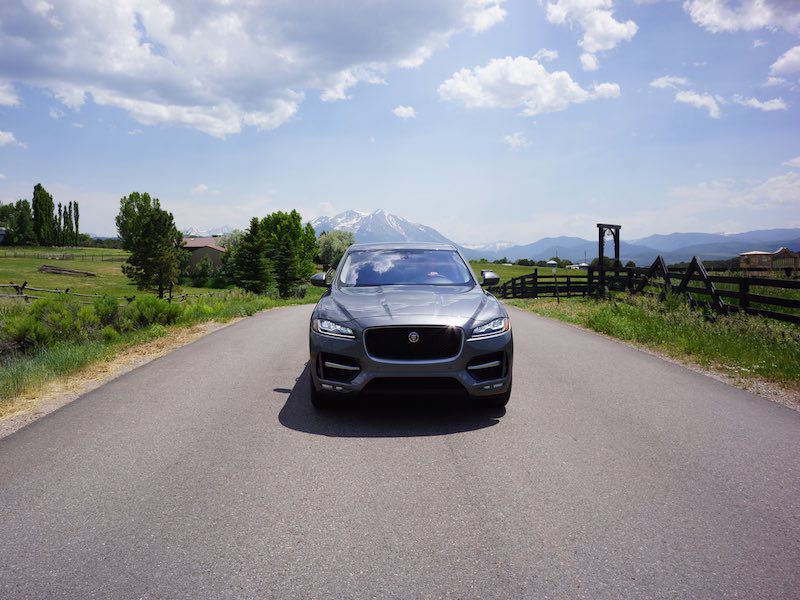
2017 Jaguar F Pace gray front ・ Photo by Nicolas Stecher
Jaguar is on a roll. With the introduction of its entry-level XE compact sports sedan, and now the F-Pace—Jaguar’s first-ever SUV—the venerable British marque has five vehicles in its lineup for the first time in its rich 80-year history. With an aggressive pricing strategy that sees its vehicles selling for several thousand dollars less than its German competitors, many customers are cross-shopping the Leaping Cat for the first time.
With the introduction of these two products in volume-selling segments, it’s quite possible that Jaguar’s sales could double in the upcoming year—and perhaps even triple. These are critical vehicles to the brand’s future. So how exactly does Jag’s first foray into the world of SUVs fair? We flew to Aspen, Colorado, to test out the sporty crossover in hairpin switchbacks, mountainous ascents, and even in some off-road Rockies tomfoolery. Here’s what we learned.
Exterior: F-Type Handsome
First things first: the F-Pace is a gorgeous vehicle. Design from segment competitors Mercedes-Benz and BMW improves seemingly with every vehicle. But despite the prodigious work of Merc’s Gorden Wagener and Bimmer’s Adrian van Hooydonk and Karim Habib, Jaguar just might have the best design language in the luxury/performance sector—which is saying a lot. Credit HOF designer Ian Callum, who has crafted for Jag some of the finest sheet metal in the game (all praise the mighty F-Type). Callum’s team did an exceptional job transferring his already handsome design language onto the taller SUV form: in person, the F-Pace may just be the best looking compact luxury suv in the world.
A front fascia that looks like the XE’s Viking twin features huge front air vents, Xenon headlamps with LED running lights, and an enlarged version of Jag’s signature grille. Fattened rear haunches curve over to tail-lamps inspired by the F-Type. It’s a minor cosmetic complaint, but the twin exhaust ports could be larger to express the F-Pace’s performance pedigree. Big 20” black wheels on the “R-sport” and “S” packages are the only way to properly finish off the aggressive crossover (otherwise there’s 19” alloys on Premium and Prestige trims and 18” on the base).
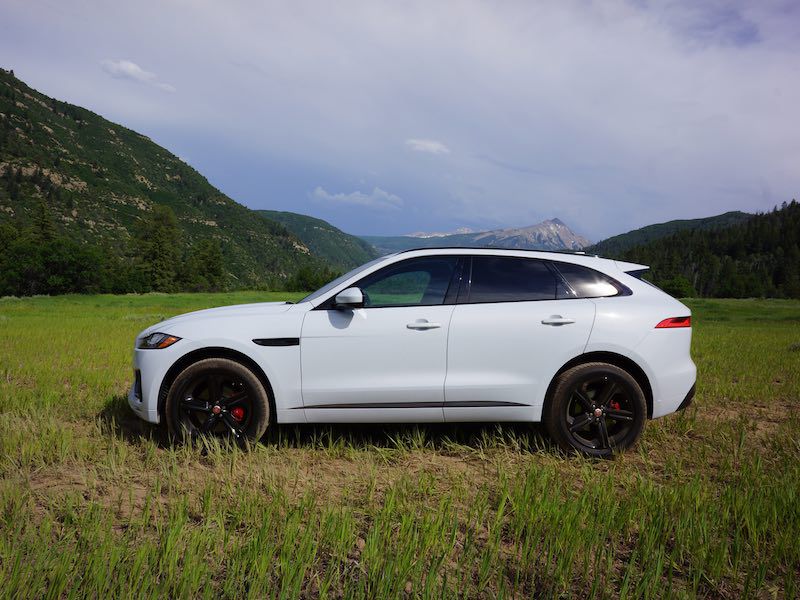
Photo by Nicolas Stecher
Powertrain Options: Good choices, but some low-touch issues.
There are three engine options for the F-Pace, two sourced from the same 3.0-liter supercharged V6. The lower “35t” offers 340 horsepower, while the highest level “S” trim gets 380 hp; both have 332 lb.-ft of torque. There’s also a four-cylinder “20d” 2.0-liter turbo diesel that generates 180 hp and 318 lb.-ft of torque. Every F-Pace comes standard with AWD.
All F-Paces use a ZF-sourced 8-speed automatic transmission with paddle shifters. The ZF tranny is fluid and quick-shifting, and allows for smooth rowing up and down the gears. One complaint is it would be nice if the higher trim levels used some sort of metal on the paddles as the plastic can feel a bit chintzy—and in such an important performance-oriented touchpoint, the material quality goes a long way into making the shifting experience feel heftier.
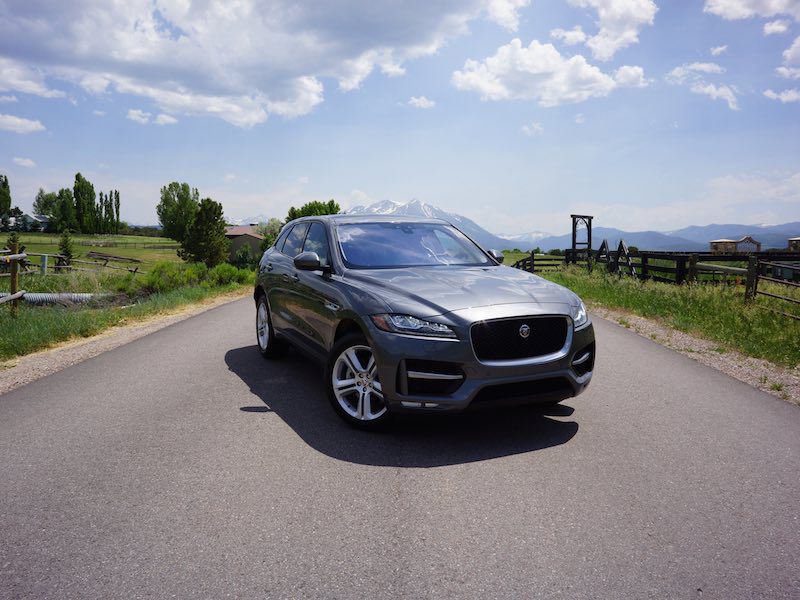
Photo by Nicolas Stecher
Driving Dynamics: Drives like a sports sedan.
As the F-Pace shares its aluminum-intensive architecture with both the new XE and recently redesigned XF, it has the bones of a sport sedan. And more so than any other car in its class, it drives like one. The 340-horsepower version has plenty of punch at low revs, especially when you slip it into Sport mode. Enough to pass horse trailers going up the Rockies, even. We got pulled over going 20 mph over the speed limit, and didn’t even notice. The SUV’s center of gravity feels low, well-balanced, with sharp steering; driving feel is so carlike you may not realize how fast you’re going. Now this could be dangerous—not for your health, mind you, but for your license points.
This is especially true with the S’s 380-hp motor. It feels all-out muscular. You’ll make short work of most competitors without an “AMG” or “SRT” on the tailgate. As can be expected from Jag, the supercharged V6 S elicits a brash exhaust note that adds to the overall F-Pace experience.
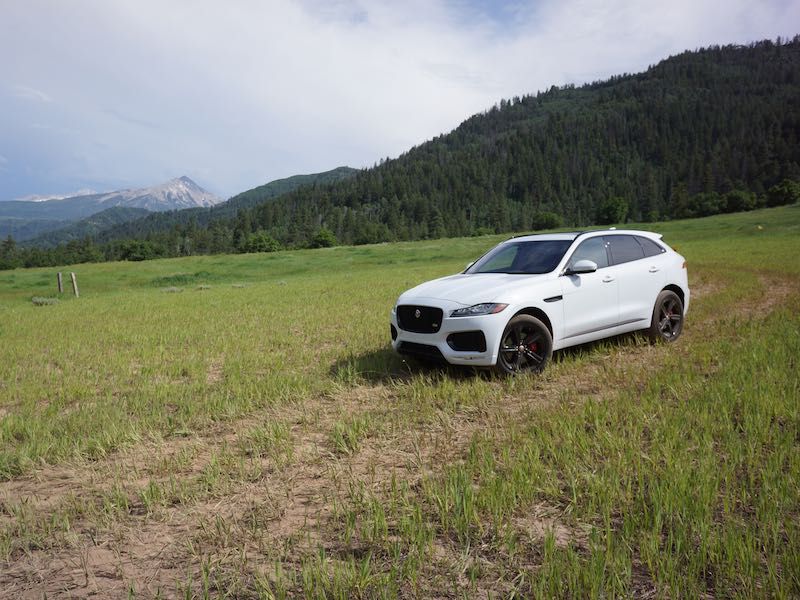
Photo by Nicolas Stecher
Interior: Logo-rich, but simple.
Interior is clean and simple, with some nice premium touches. A huge panoramic sunroof runs down the length of the SUV, with a sunglass case stashed just behind the rearview mirror. There are mini “Jaguar” metal badges on the air vents above the center screen and at the corners of the dash, with knurled metal control dials. More metal “Jaguar” badges on the door sills. Door handles and around the air vents are made from brushed metal, as is the round gear shift dial on the center console (Jag uses a dial instead of a stick to select gears).
Our R-Sport (second highest trim level) featured black Taurus leather on the dash and seats, with white contrast stitching. An open-pore dark walnut wood surrounded the door handles (front and rear) and the gear dial. The second F-Pace we drove was the top-level “S”, and it was wrapped in a black and chocolate brown duotone interior with piano black veneer running up the center stack and around the shift dial. Instead of wood it featured a faux-carbon fiber surfacing around the door handles.
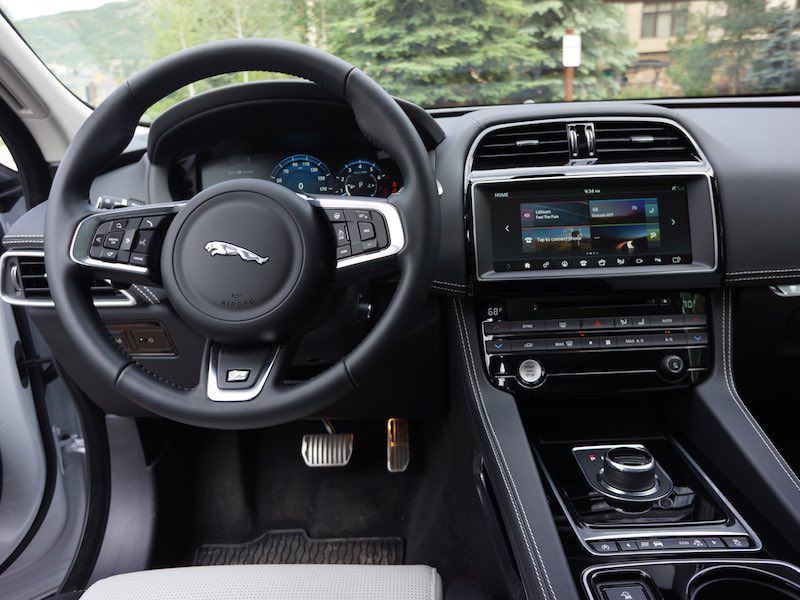
Photo by Nicolas Stecher
Interior Details: A too-big dash in some models.
In the center armrest storage compartment you’ll find an SD card slot and two USB ports. Rear seats are two buckets, not a bench, with an arm rest between them that folds down to expose cupholders. Rear passengers get their own dual USB ports and a 12-volt cigarette lighter port.
One issue is the massive dash—the way it leans down towards the knees exacerbates its size. This means when the materials are premium (i.e. leather), it looks fitting for a luxury offering. When it’s a cheaper substitute, there’s massive acreage of plastic front and center. This leaves the cabin in a different (and inferior) league than competitors like the Mercedes-Benz GLC and Porsche Macan.

Interior Options: Extras worthy of consideration.
A Comfort Package ($1,800) gives you a heated steering wheel and heated and cooled front seats, and heated rear seats that can recline at the push of a button. It also includes the Gesture Tailgate, which allows you to open the tailgate simply by sweeping your foot under the corner of the rear bumper should your hands be otherwise occupied.
Cooled rear seats can also be attained with a Luxury Interior Upgrade package ($2,100) that gives rear passengers their own two climate zones (upping the standard 2-zone into a 4-zone setup), 10-color ambient lighting and a chilled glove compartment. The Technology Package ($3,200) replaces the standard analog gauge cluster to a 12.3-inch Virtual Instrument Cluster (more on this next). It also upgrades the standard 380-watt/11-speaker system to an 825-watt/17-speaker Surround Sound system, both courtesy of Meridian. A laser head-up display can be had for $990.
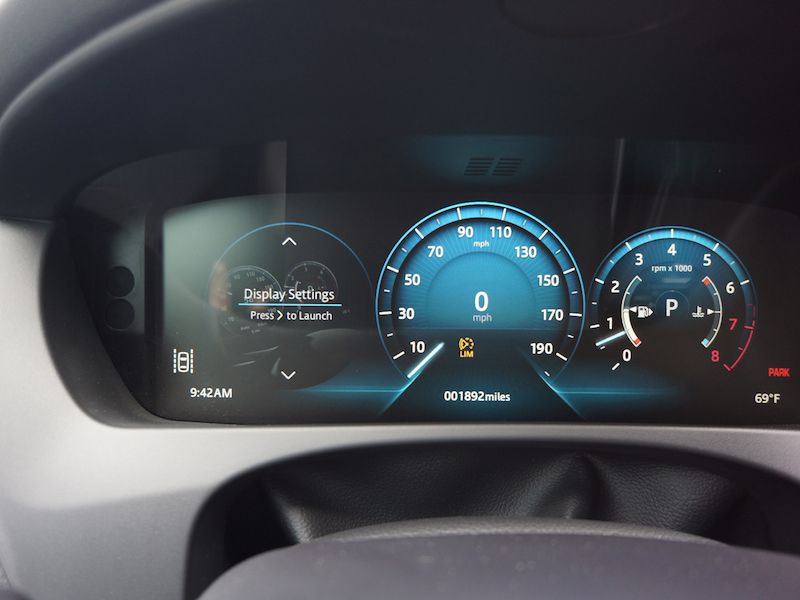
Photo by Nicolas Stecher
Virtual Instrument Cluster: Highly customizable.
With the Technology Package, the gauge cluster is replaced with a wide 12.3-inch screen that can be customized into themes (Graphic, Minimal, Tech, etc), and when you dial it into Sport mode the colors change to red. You can also use it as a wide navigation map, with vital info (speed, time, fuel level, etc) running along the bottom. This way you can keep an eye on the map, while your passenger plays DJ (mine was particularly high on ‘80s Hits). Meanwhile, the center 10.2-inch touchscreen (8-inch standard) is one of the most customizable HMI’s in the automotive space. Change wallpaper, or arrange tiles on the home screen to fit apps (both default and downloadable). It’s fast, powered by a quad-core processor and high-speed 60GB solid-state drive (SSD).

Photo by Nicolas Stecher
Activity Key: FitBit-like keyless solution.
One innovation for this active lifestyle vehicle is Jaguar’s Activity Key ($400). It’s a Fitbit-like rubber wristband that uses RFID technology—the same found on your credit cards. It’s passive, which means no batteries and no moving parts to break. So if you head off to surf, mountain bike, kayak, whatever, you can lock your key fob in the glove compartment for safe keeping. Simply touch the Activity Key to the “J” on the Jaguar badge on the tailgate, and it locks the doors and deactivates your fobs—so even if someone breaks into your F-Pace they cannot use the key to start the car. When you’re done, touch the Activity Key to the “J” again and the doors unlock. No more stashing your key in the tailpipe, or burying it in the sand. A nice solution that other OEMs are sure to imitate.
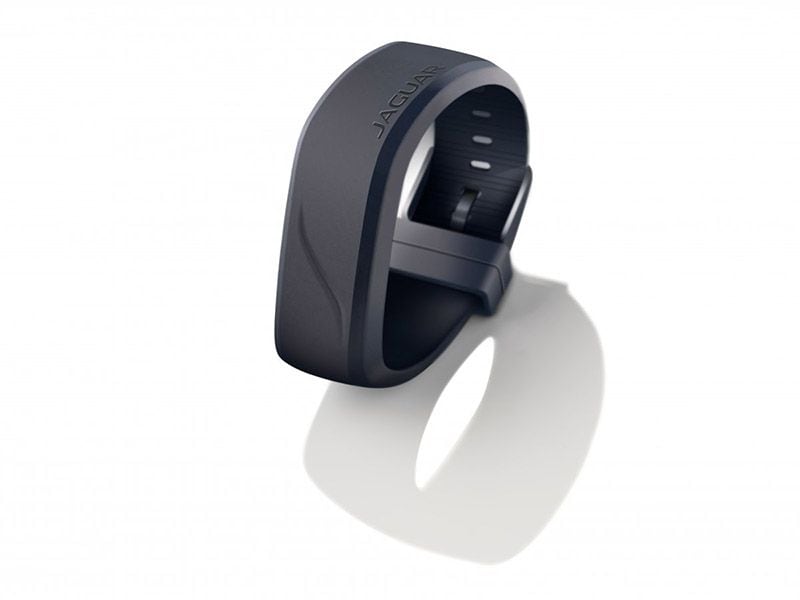
Photo by Jaguar Land Rover
Off-Road Autonomy
The F-Pace features a technology that Jag dubs “Auto Speed Progress Control”, which is essentially hill-ascent and -descent control. Think of ASPC as an off-road cruise control. Activate the ASPC button on the center console, and the F-Pace will maintain a consistent speed (up to 18 mph) without you having to touch the throttle or brake pedal. You can alter the speed up or down a steep descent simply by pushing the “+” and “-“ buttons on the steering wheel. Press the “Resume” button after you brake and the F-Pace will return to the original speed you had set. What ASPC does is keep torque constant so if you get panicky the SUV will remain speed-consistent and won’t lose grip. We took it up a steep dirt road riddled with jagged rocks and through a meadow on a gorgeous Colorado mountain, and it worked exactly as advertised.
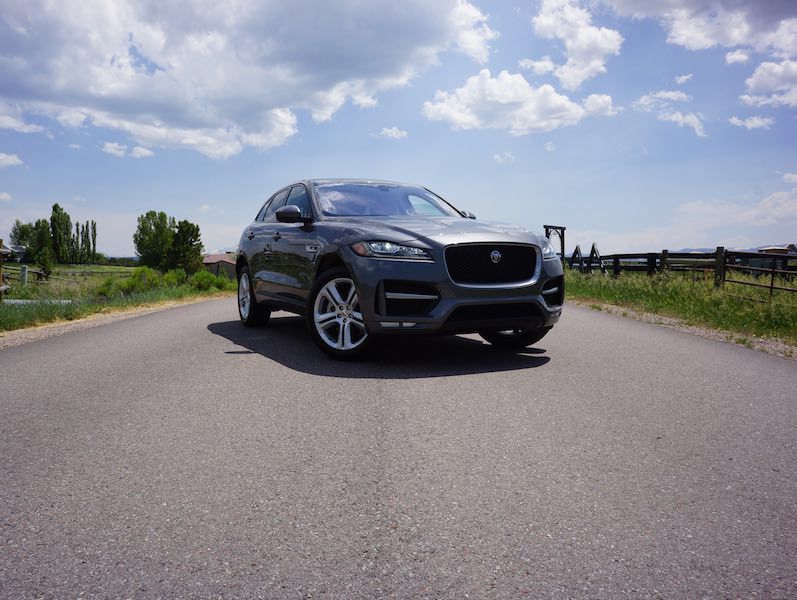
Photo by Nicolas Stecher
Pricing: Middle of high end.
Starting at $40,990, the F-Pace continues Jaguar’s aggressive pricing strategy. Sure, it’s highly unlikely anyone will purchase the base vehicle; most of the SUVs we drove hovered around $55-$60,000—which can be roughly estimated to be the cost for a well-optioned vehicle. The 380-horsepower “S” starts at $56,700 and can get as high as $70,000—more than all but the Porsche Macan S and BMW X4 M40i.
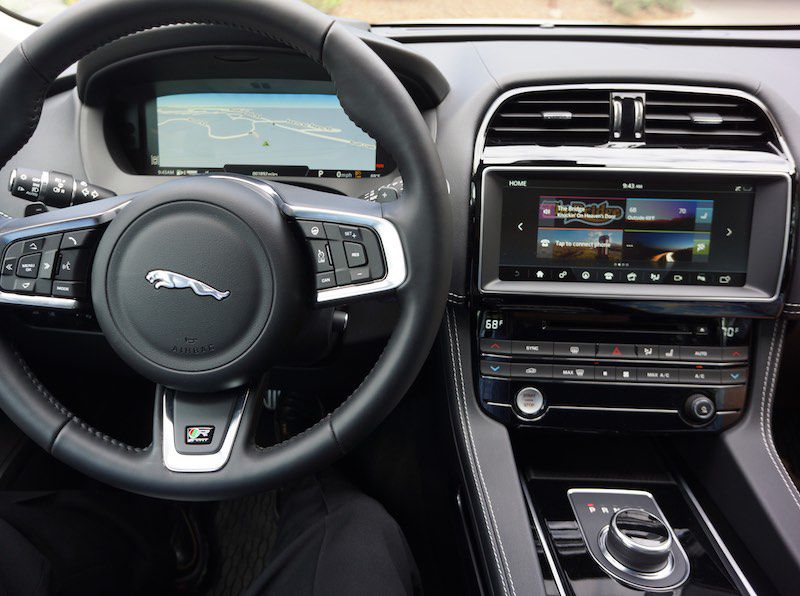
Photo by Nicolas Stecher